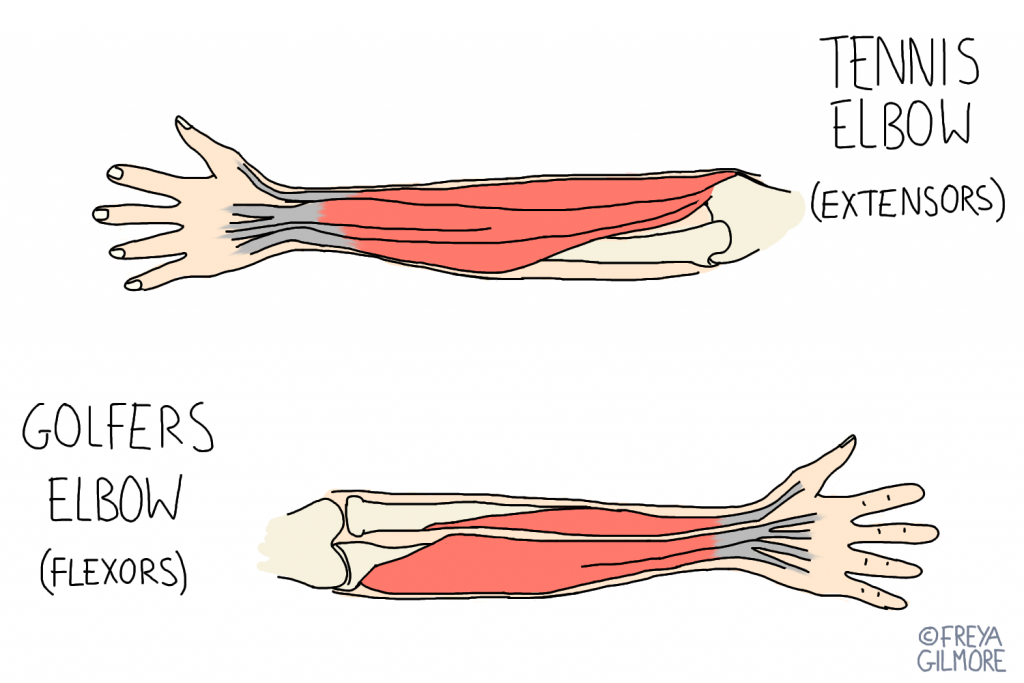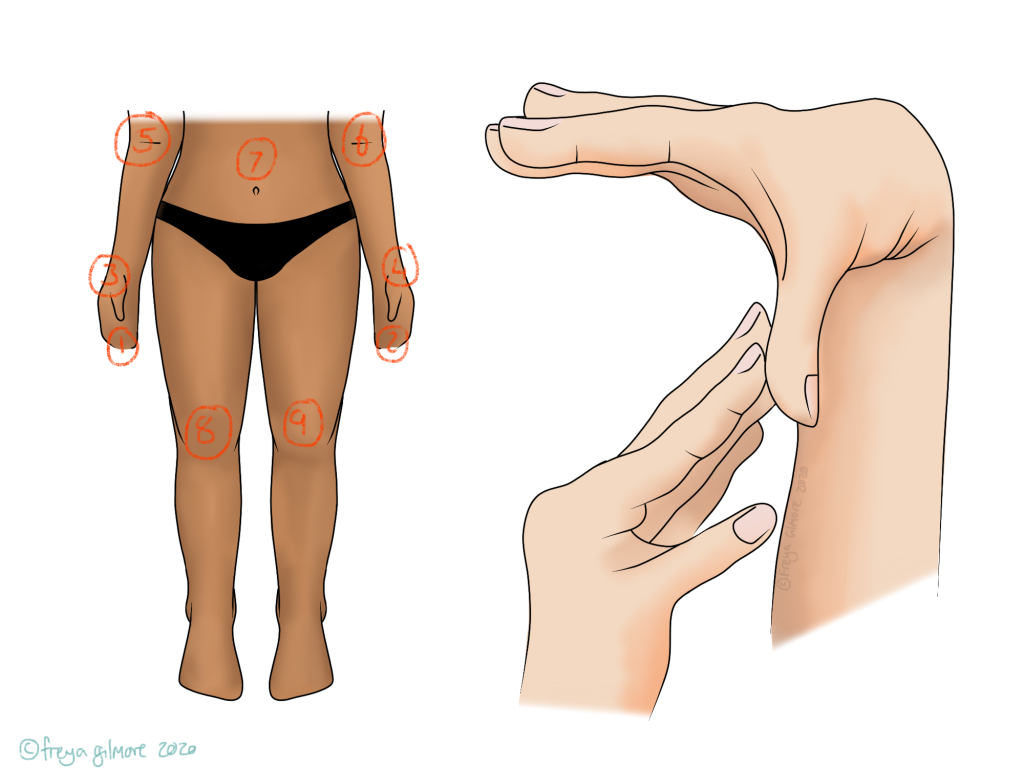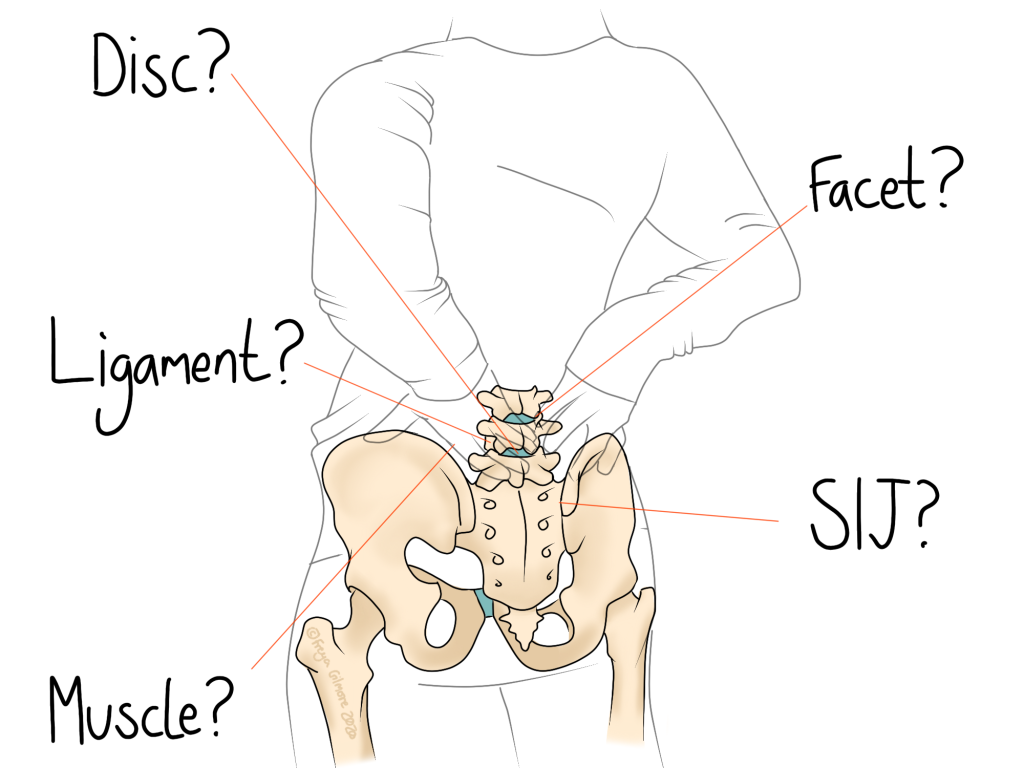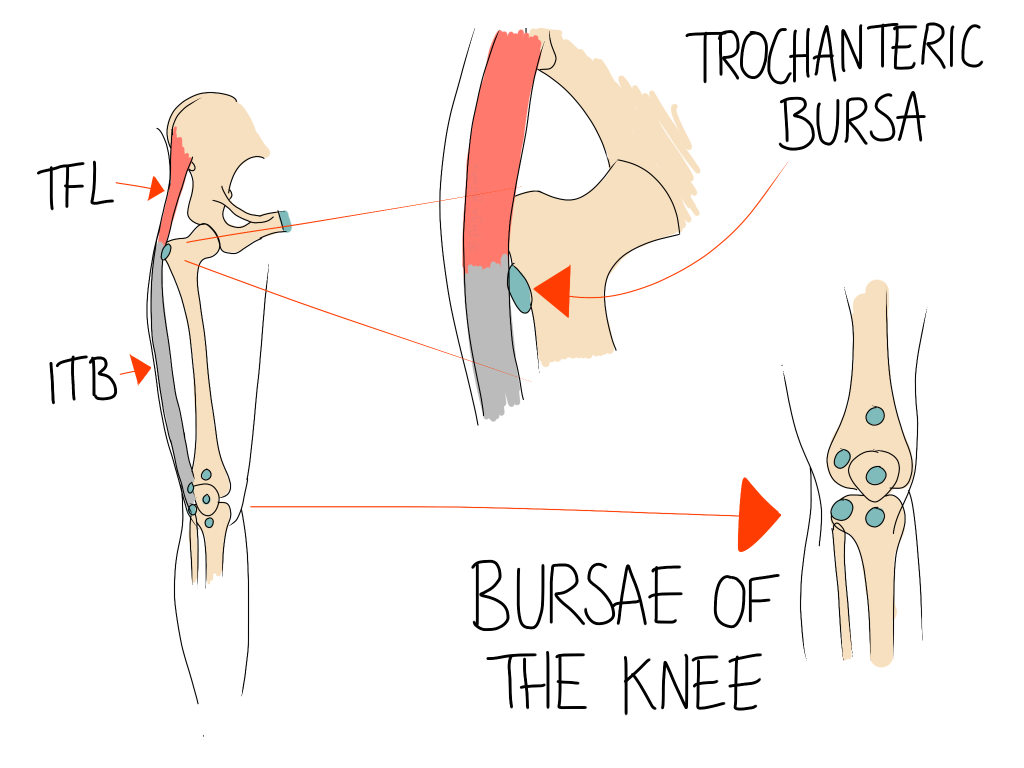Tennis Elbow
Tennis elbow is the more common of the two, affecting the muscles on the outside of the forearm. The technical term is lateral epicondylitis.
Although it’s commonly referred to as “tennis” elbow, it is linked to most racket sports, including squash and badminton, as inefficient technique on backhand swings can overstrain the extensor muscles of the forearm that are employed when bringing the wrist back and turning the palm up (supination). Other factors in these sports can include weather conditions and features of the racket such as weight, size of handle, and tension of the strings.
Of course, other movements can initiate an episode of tennis elbow, typically repetitive movements as required in computer work, as well as the movements performed by some musicians and manual labourers.
On a microscopic level, some of the tendon fibres will be found to have micro-tears with subsequent inflammation, which is why the area becomes tender and pain is reproduced by movements that cause the muscles to activate.
Golfer’s Elbow
Golfers elbow or medial epicondylitis appears as a similar condition, affecting the muscles that oppose those affected by tennis elbow: the wrist flexors, which attach to the inside of the forearm and elbow. Thus, with golfer’s elbow, flexing the wrist will aggravate symptoms.
Because a different set of muscles are affected here, different activities tend to bring it on, but this is not to say that playing tennis cannot cause golfer’s elbow or vice versa. Again, rackets the wrong size, weight, or with the wrong string tension can aggravate the wrist flexors- although forehand strokes are likely to affect the flexors more than backhand strokes. As the name suggests, golf is associated, as well as repeated throwing.
In the acute phase, golfer’s and tennis elbow have the same mechanism: microtears and inflammation, but occasionally in longer term cases there can be neurological involvement.
Treatment
Treatment to the local area and beyond, aiming to reduce tension around the elbow, can help. This might mean working through the shoulder, wrist, and back to help you move more efficiently. Lifestyle changes might also help to ease the load on the arm. If tennis was indeed the cause of your pain, you might find that a thicker grip reduces demand on the affected muscles. Your osteopath can advise you on this, as well as offering advice about using warm or cool compresses, and exercises to support your healing.
Click here to book an appointment for your elbow pain




